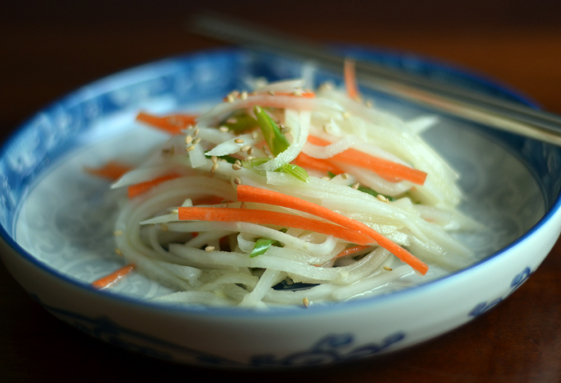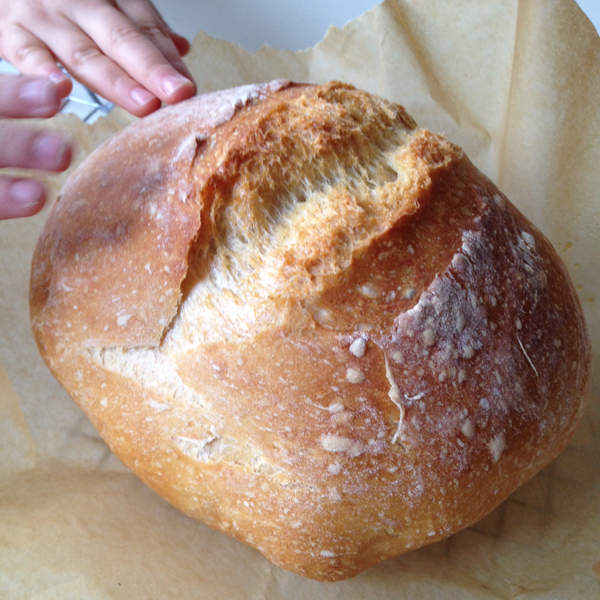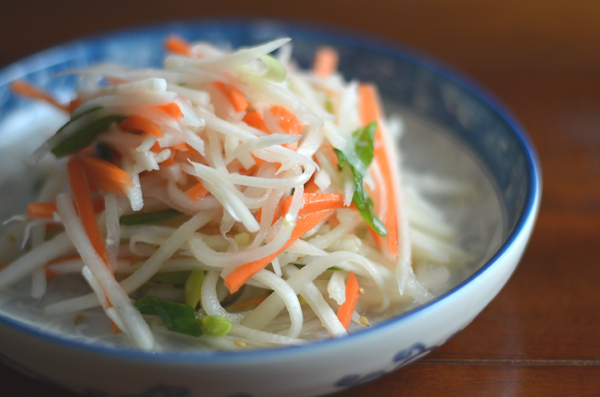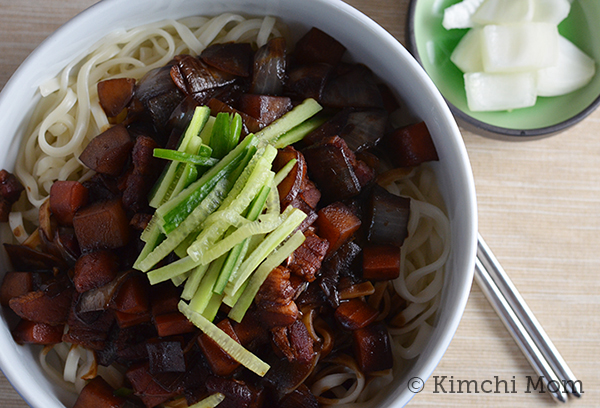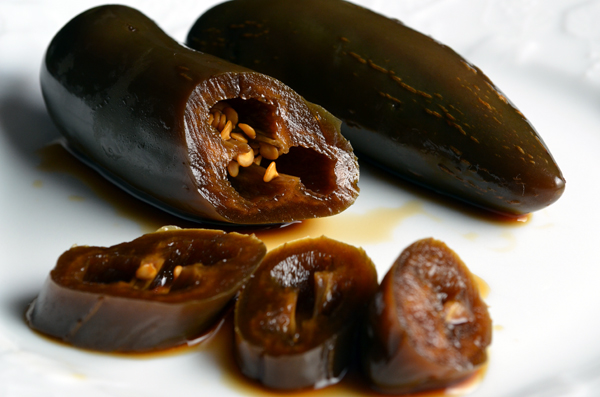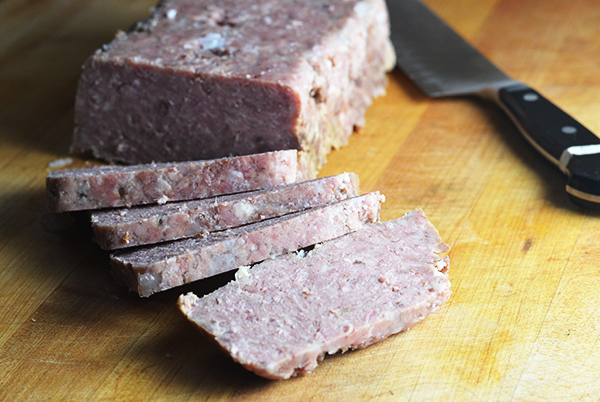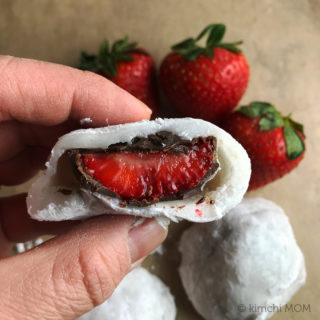I’m trying to make changes in our household. Small changes. My goal is to cook and eat more healthily, and waste less food. Ever since I read Kat Flinn’s Kitchen Counter Cooking School, I’ve been “thinking” more about food. Not just fantasizing about restaurants and the hottest trends, but just being more thoughtful in what I feed my family and how I buy groceries.
One statistic that stood out for me from Flinn’s book is that the average American throws out about 40% of their groceries. FORTY PERCENT! We’ve all been there, right? You buy bags and bags of groceries and by the end of the week, you’re throwing out half of what you bought. I let greens go in the crisper until they turn into black goo or sometimes I throw out root vegetables that are a teensy bit wilted (otherwise perfect for stock) or I throw out the last few slices of sandwich bread because it’s a little stale (otherwise perfect for breadcrumbs) or…the list goes on.
While I really have no real rigid strategy or spreadsheets with price comparisons as to how I’m going to tackle my changes, I just kept in mind “good food and less waste”. Not much of a mantra, but it works for me. And instead of tackling a hundred to-do items and setting myself up for failure, I’m taking it one step at a time and starting with a few changes. Below are five changes that I’ve been trying to incorporate in our household.
Change No. 1
I stopped buying bread and have been baking bread for the past several months. The “artisan bread in 5 minutes” changed my life. Baking bread has been a weekly ritual. The bread is tastier, fresher, and much more preferred by the kids over regular sliced bread. I used to throw out half eaten limp toast every morning! I love the fact that we have fresh baked bread every week. I now spend about $4 for a bag of organic all-purpose flour that’ll give me about 6-7 loaves of bread. I used to spend that much (or more) on ONE loaf!
Change No. 2
Since we are a pasta and red sauce lovin’ family, I’ve been trying to make my own tomato sauce. We used to buy the good stuff at about $8 for a 32-ounce jar. I threw out so much because I’d use half a jar and let the half-filled jar sit in the fridge for weeks until fuzzy little islands appeared on the surface. Two 28-ounce cans of organic whole tomatoes are about $4 or $5 total and yields about 2 quarts of flavorful sauce. I use Mario Batali’s recipe for basic tomato sauce. Making my own sauce also enables me to freeze in smaller portions so there’s less waste.
Change No. 3
I buy two whole chickens about every couple of weeks. I roast one and quarter the other. The last time I quartered a chicken was back in the late 90’s when Will Smith was “gettin’ jiggy wit it”. Yes, I’ve been out of practice! I’ve quartered about 3-4 chickens since the beginning of the year. It’s getting a little easier each time I hack at a bird, but nothing like Hung in the mise-en-place relay challenge on Season 3 of Top Chef. Remember that? Anyway, not only do I save money with an organic whole chicken priced at about $2.99/pound versus a package of skinless, boneless chicken thighs at about $3.99/pound (at WFM), I’m using the whole bird which brings me to…
Change No. 4
So with the chicken carcass (from both the butchered and roasted chicken), I make some simple stock. If I can’t make the stock right away, I throw the carcasses in a Ziploc and freeze it until I’m ready. I’ve also made an Asian-style broth with 2 chicken carcasses, garlic cloves, a chunk of ginger, green onions, and 5 quarts of water and let it simmer for about 4 hours. Yum. Sometimes I make a more traditional stock using a recipe similar to Kat Flinn’s recipe. And as I did with the tomato sauce, I freeze the stock in smaller portions.
Change No. 5
And this is the hardest task…meal planning. Last year, I attempted to plan my meals every week and the motivation died down after 3 weeks and was never revived. I’m trying a different approach this time around and am planning lunch and dinners for Monday through Wednesday. For some reason, it’s just too much for me to look beyond Wednesday and by Thursday I am ready to crash and throw back a few. Wednesday night I revisit my meal plans and it usually involves leftovers and definitely something quick.
This is just a start…one step at a time. One thing that I learned and accepted is that all this takes time and effort. Smart and healthy cooking and eating is a big investment and you can’t get around that. (Committing to a exercise regimen is another story…)
Believe me, there are days where I really struggle with what to put on the table and some weeks are better than others. Every once in a while we order in pizza or I sneak in a bowl of hyperprocessed instant noodles for lunch or I break down and buy a jar of my favorite marinara sauce. Hey, I’m only human! BUT it has been getting easier with each passing week. and these changes are slowly transforming into routines.
So I couldn’t leave you without a delicious (and healthy) recipe. This is a recipe for one of my favorite banchan, moo saeng chae or seasoned radish salad. It’s typically made with Korean radish or moo, but daikon is more readily available for me at my nearby grocery store. Unless you have super knife skills and can julienne like a master chef, I would recommend dragging out your mandoline if you own one! Also, you can include kochugaru for a little kick, but just so you know, the radish will take on a little tinge of red.
Moo Saeng Chae
2 -3 medium daikon (about 1 1/4 to 1 1/2 pounds), julienne
1 carrot, julienne
2 stalks green onions, sliced thin on a diagonal
1 clove garlic, minced
1/2 – 3/4 cup rice vinegar
2 Tablespoons sugar
1 Tablespoon sesame oil
1 teaspoon salt
About 1 Tablespoon kochugaru (optional)
2 teaspoons roasted sesame seeds for garnish
1 – Place the radish and carrot in a large bowl and set aside.
2 – In a small mixing bowl, mix together the remaining ingredients except for the sesame seeds. Taste and adjust seasonings. I tend to like my salad a little more tangy than sweet, but if you like it a little more sweet, you can always add a bit more sugar. If you like more tang, add the full 3/4 cup vinegar.
3 – Pour the vinegar mixture over the radish and mix thoroughly.
4 – Cover the bowl and let sit in the refrigerator for about an hour before serving. Tastes even better the next day!
5 – Garnish with sesame seeds before serving.
